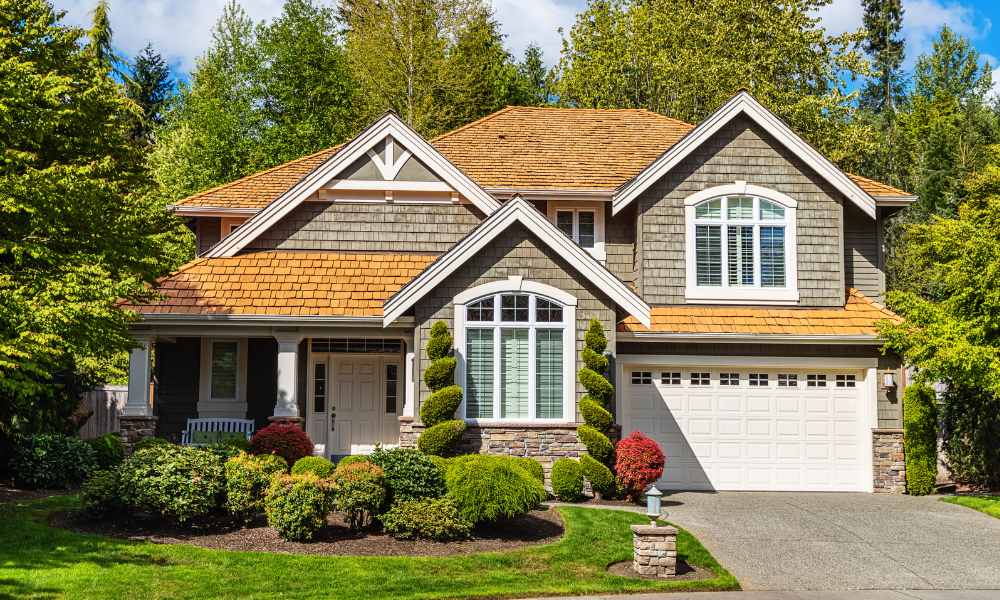A brief overview
Flipping houses is a well-known and commonly used real estate investing strategy. However, the regular flipping strategy isn’t the only way to generate a significant profit from an investment property. Live in flips are a less commonly used but also an effective real estate investing method. Should you try a live in flip? Read on to find out if this strategy suits you.
Key Points
Flipping houses is one of the most popular and lucrative real estate investing strategies. It involves buying a property at below market value, then doing repairs and renovations and selling it again for a profit. Typically, one would imagine that house flipping would be done while living in another location, however it is possible to flip a house and live in it.
While it may not be the regular choice, live in flips are a viable option for real estate investors who are just starting out. Should you try a live in flip? Let’s take a look at this investing strategy, and the pros and cons.
What is a live in flip?
Live in house flipping is a real estate investing strategy that isn’t the first choice for many, however when it’s done right it can be a successful way to flip houses.
A live in flip is when investors move into a house that they are going to flip. In other words, investors will buy a home that they intend to flip, move into it while it is being remodeled and then sell the property for a profit once it has been renovated.
How does a live in flip differ from a normal house flip?
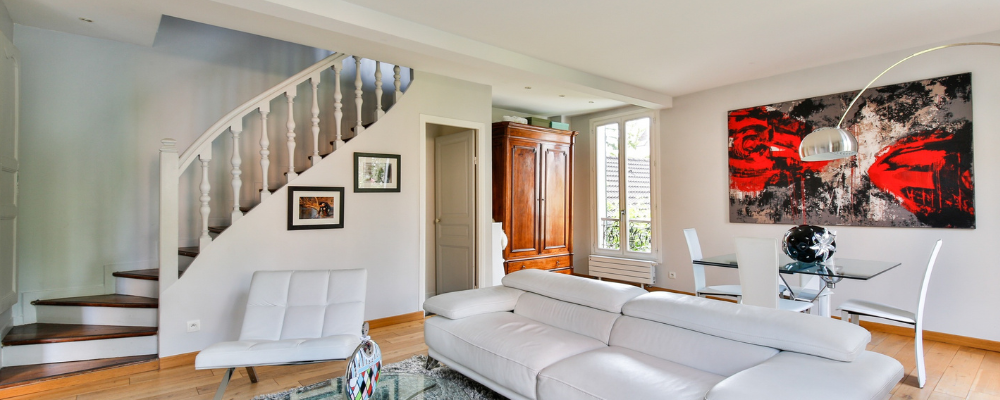
While both house flipping strategies involve buying a home below market value and then remodeling it to sell for a profit, a live in flip is quite different to a regular house flip in few key areas.
- The first and most obvious difference is the fact that regular house flips don’t involve living in the house while it is being remodeled, while the premise of live in flips is that the house is an investor’s primary residence for the duration of the project and even longer.
- The tax benefits of a live in flip can be a big advantage for investors, however they require occupation of the house as a primary residence, and therefore these benefits aren’t part of the regular house flipping strategy.
- Live in flips are a slower strategy than regular house flips because investors are required to live in the property for 2 years or more, and the renovations must be done around them. Regular house flips can take just a few months, while live in flips typically take a few years.
Pros and cons of live in flips
Advantages of live in flips

- Tax benefits
Typically, house flipping is not considered to be passive investing by the IRS, and is considered active income, so the investor will need to pay normal income taxes on their net profits within the financial year.
However, one of the biggest advantages of buying a home and making it your primary residence while you renovate it is tax savings. According to the Section 121 exclusion, if you have lived in a home for at least 2 years after it was purchased, you will not need to pay capital gains tax once you sell the property. This can equate to a saving of hundreds of thousands of dollars.
- One mortgage
Real estate investors who choose to do regular house flipping will invariably end up with multiple mortgages, for their primary residence and the houses that they are flipping. Those who choose the live in flip option will only have one mortgage, which can be a much cheaper alternative as there will only be one set of carrying costs. These costs include property maintenance, utilities, insurance and more.
- No time constraints
Investors who are living in the home they are flipping won’t have any time constraints for selling. When it comes to conventional house flips, the aim is to get the house renovated and sold again as quickly as possible to make a profit. This is because the mortgage costs are a hinderance for investors, as well as the other costs that come with owning a property.
However, with live in flips, there is no pressure to get the project complete and the house sold quickly. There are no secondary expenses and paying the mortgage for your live in flip is not a disadvantage. The extra time could be beneficial as it allows for bargain hunting for the remodeling project materials and labor.
- Do more yourself
A live in flip allows investors to be present for all the renovations and therefore take on some of the work themselves to save money. Investors can save on hiring contractors for aspects of the project that they can do themselves. It’s important to check whether a permit is required for any DIY work being done however, as some tasks need to be done by a professional.
- More options for finance
If the house is going to be an investor’s primary residence while they’re flipping it, this opens up more financing opportunities. For example, conventional mortgages cannot be used for regular house flipping purchases. When you’re looking at how to get a loan to flip a house, bear this in mind.
Owner-occupied mortgage financing offers lower interest rates, and smaller down payments are required. This can be a big saving for investors, who may only have to do a down payment of 2.5% instead of 20%. Along with this, certain foreclosed properties are specifically on offer to owner occupants who can snag good deals at certain times.
Disadvantages of live in flips
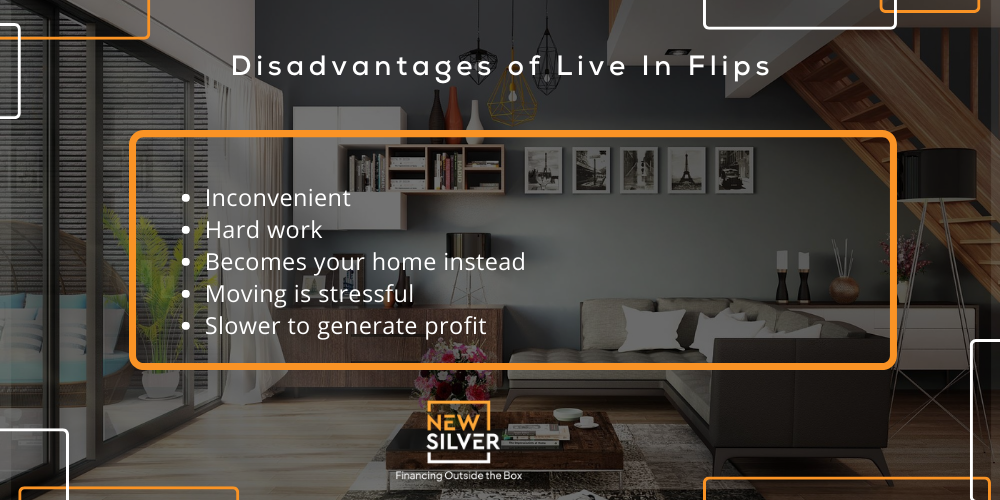
- Inconvenient
Living in what is essentially a construction zone can be extremely inconvenient. It’s messy, loud and disorganized. While it may not be for a long period of time, a few months surrounded by construction can be too much for some people. It’s an inconvenience not only for cleanliness but also for hosting others and having strangers in your house for weeks or months on end.
- Hard work
A live in flip is hard work, there are no two ways around that. It will require a lot of weekends spent doing work around the house, which can be tricky if investors also have a full-time job. In order to save costs, investors can do many parts of the project themselves, however this is time and energy consuming.
- Becomes your home instead
Sometimes investors who are remodeling a home with the intention of flipping it end up beginning to enjoy the house instead and keeping it for themselves. This means that the project will not be generating a profit any time soon and therefore the flip dissolves. The risk of this happening is relatively high considering investors have already moved into the house, and as an investing strategy this is a significant disadvantage.
- Moving is stressful
Using this strategy means that investors will be moving around every 2 to 3 years once each project is complete and the house is sold. Moving is stressful at the best of times and having to do it repeatedly can be tiresome. So, this may not be a sustainable strategy for the long term, due to these reasons. Moving is one of the biggest drawbacks to the live in flip strategy and can be one of the main deterrents for some investors.
- Slower to generate profit
While this strategy can be effective at generating profits, it may take a lot longer than regular flips. While conventional house flipping can be done in just a few months, live in flips will take years to renovate and sell based on the tax savings requirements and the fact that investors are living in the house which invariably slows down the project.
Is the live in flip strategy repeatable?
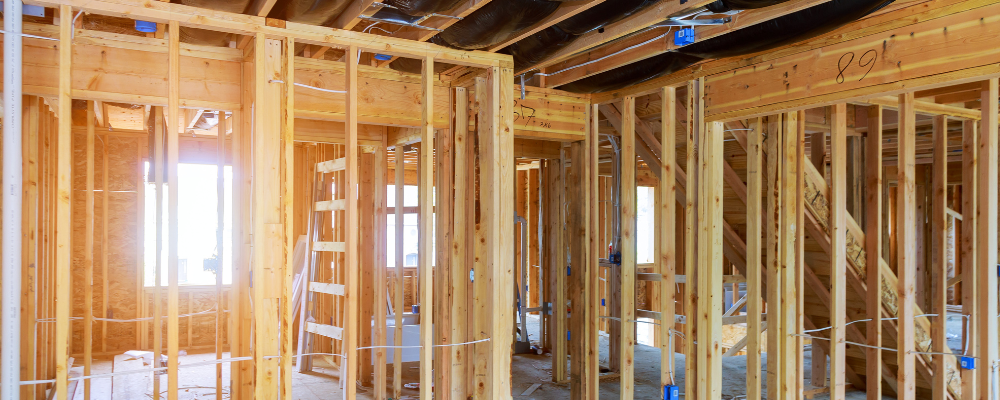
The live in flip strategy can be repeated by investors who wish to continue making a profit and scale up. Investors can use profits from the sale as a down payment, which will allow them to buy a larger property the next time around. This can be repeated as much as the investor chooses, and the strategy can be scaled as needed.
Repeating the live in flip strategy will require moving every few years which might not be for everyone. However, if the strategy is successful for them and they feel that they can continue, then repeating it is a good option, at least for a few flips.
With the money that is generated from these flips, investors can choose to invest in bigger and more profitable house flipping deals, or alternatively purchase rental properties to earn a passive income.
Should you attempt a live in flip?
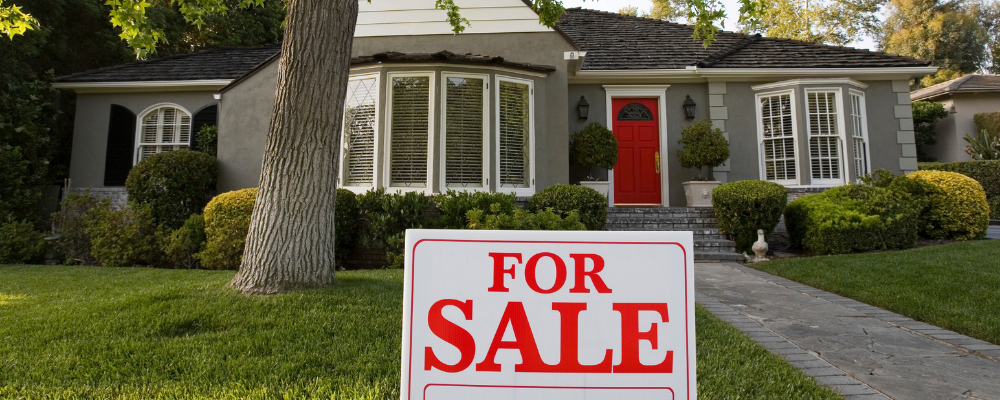
Whether you choose to attempt a live in flip or not, depends entirely on your personal circumstances. Take a look at the benefits and drawbacks of living in a property that you’re flipping and decide from these whether this is a good investing strategy for you based on your finances and personal preferences.
If you choose to attempt a live in flip, here are a few useful tips:
- Get to know the real estate market before you purchase a live in flip. The more familiar you are with the local housing market, the more informed your decisions will be about purchase prices.
- Stick to your budget. It’s easy to get carried away with repairs and renovations, particularly over a longer period of time. So, setting a budget is important and sticking to it even more so, to make sure that a profit is still made.
- Pick the right lender. Choosing the right financing option from the right lender is a crucial part of the live in flip strategy. Paying a mortgage or paying cash for the house can make a big difference to the overall strategy so choose carefully.
